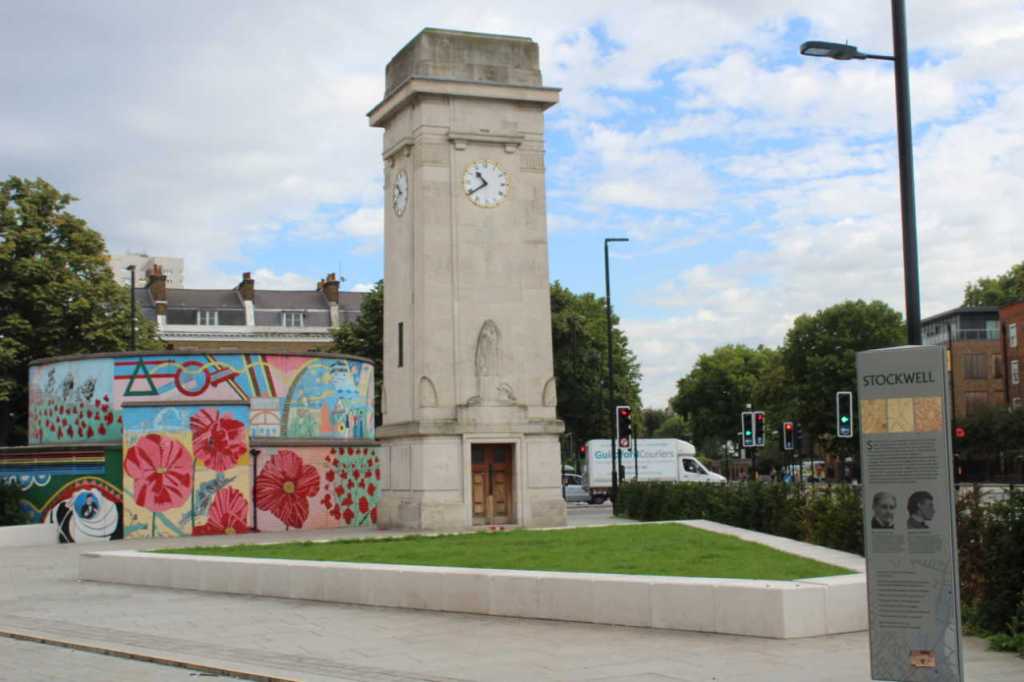- See Frederick Marlow’s entry on the Board of Trade’s Ancestry public tree.
- This information updates the group’s previous research published on the former DTI website (now archived by the National Archives).
- Do you have any more information about Frederick Marlow? If so the War Memorial Research Group would love to hear from you
Name recorded on Board of Trade Memorial: F. Marlow
Born: May 1894 in Lambeth, London, England
Date of Death: 9 May 1915
Age at death: 21
Service, Regiment, Corps, etc: London Regiment
Unit, Ship, etc: 1st/13th Battalion (Princess Louise’s Kensington Battalion)
Enlisted: Kensington
Rank: Private (Service No: 2999)
Decorations: WW1 Service Medals (Victory Medal, British War Medal and 1915 Star)
War (and theatre): WW1 (France and Flanders)
Manner of Death: Killed In Action (KIA)
Family Details: Son of Mrs C Marlow, 15 Stansfield Road, Stockwell, London
Residence: Brixton
Home Department: Board of Trade – Labour Department (Central Office)
Civilian Rank: Abstractor
Cemetery or Memorial: Ploegsteert Memorial, Comines-Warneton, Hainaut (Panel 10); Board of Trade War Memorial; Memorial to the Staff of the Ministry of Labour, Caxton House, Tothill Street, London; Stockwell War Memorial; St Andrews Church, Landor Road, Stockwell, London; West Norwood Cemetery and Crematorium;
Biography:
Frederick Marlow was born in May 1894 in Lambeth, London. He was baptised on 24 June 19894 at St Andrew’s Church, Stockwell Green. His parents were John Marlow (1858-1919) and Catherine Scarborough (1860-1949). He had one sister – Catherine Elizabeth Marlow (1890-1964) and three brothers – William Marlow (1890-1958), Henry Marlow (1892-1978) and George Marlow (1896-1942) and another sibling who died in infancy. His father worked as a joiner.
In both the 1901 and 1911 census, the Marlow family are living at 15 Stansfield Road, Stockwell, London.
Frederick appears on a Board of Trade staff listed dated April 1913 as one of 47 Abstractors (New Class) in the Labour Exchanges and Unemployment Insurance Branch. The date of his appointment was 29 May 1912 (from when his pension accrued) and his salary was £45.
We know from Frederick’s WW1 medal card that he Frederick enlisted as a Private with the 13th Battalion, Princess Louise’s Kensington Regiment which was a Territorial Force battalion forming part of the London Regiment.
He first served in France from 30 March 1915 so would not have taken place in the Battle of Neuve Chapelle (10-13 March 1915). His first major military action would have been the Battle of Aubers Ridge which was part of an Anglo-French offensive called the Second Battle of Artois, led by General Joseph Joffre. Aubers was a huge military disaster for the British forces with no material gain or advantage. There was no intelligence on the German positions and the offensive did not take the Germans by surprise. The British suffered with ten times more casualties than the Germans and the battle led to the Shell Crisis of 1915 and call for more artillery shells. The battle was also a defining military engagement for the 1st/13th Battalion which suffered heavy casualties losing 14 officers and over 430 men.
Frederick died on the same day – 9 May 1915 – as John Hewitt (who also served in the same regiment and battalion) and George William Martin, who served in the 4th Battalion, Seaforth Highlanders.
Frederick has no known grave. He is remembered on the Ploegsteert Memorial which is maintained by the Commonwealth War Graves Commission and remembers more than 11000 men who died in WW1. The memorial is just south of Ypres and located in the Berks Cemetery Extension. Most of the men named on the memorial did not die in major offensives but in day to day trench warfare or small scale military engagements. The memorial also doesn’t include those who were lost in the Battle at Aubers Ridge who are commemorated on the Le Touret Memorial.
In England, he is remembered locally on the Stockwell War Memorial in London and he is also remembered on a WW1 memorial panel located in St Andrew’s Church, Landor Road, Stockwell. He is remembered on his parents gravestone in West Norwood Cemetery and Crematorium.




